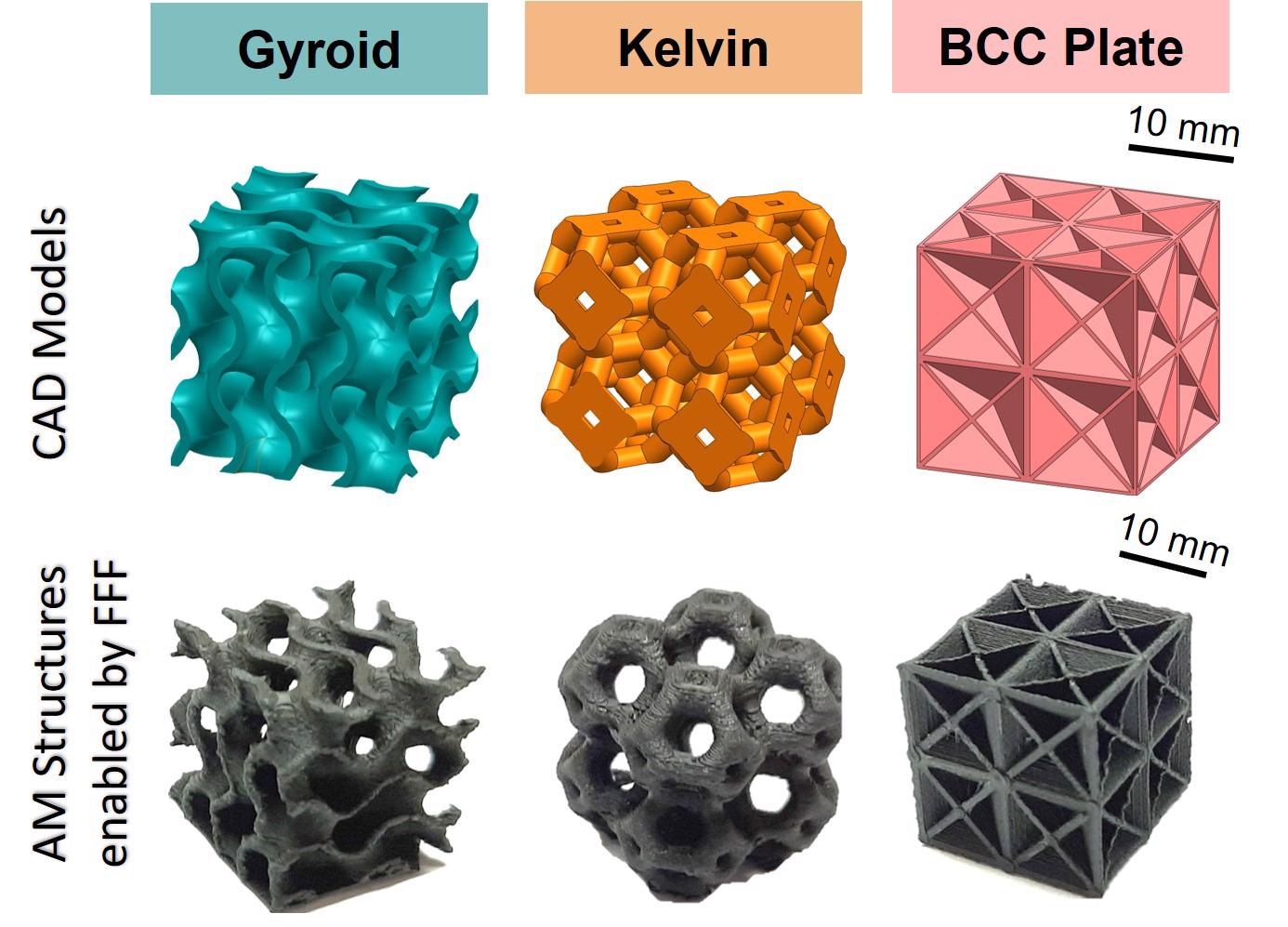A new lightweight, 3D printed smart architected material created by an international team of engineers is inspired by the cellular shapes of natural materials.

Image Credit: University of Glasgow.
Engineers from the University of Glasgow headed the team, which combined a standard industrial plastic with carbon nanotubes to produce a material that is harder, stronger and smarter than similar conventional materials.
The nanotubes also allow the plastic to transport an electric charge throughout its structure, which would otherwise be impossible. The electrical resistance of a structure varies as it is subjected to mechanical stresses. This property, called piezoresistivity, allows the material to “sense” its structural health.
Scientists were able to build a variety of intricate patterns with mesoscale porous architecture utilizing modern 3D printing techniques that allow a great level of control over the design of printed structures, which helps to minimize the overall weight and enhance mechanical performance.
The team’s cellular designs are inspired by porous natural materials such as beehives, sponges, and bone, which are light but strong.
The researchers hope that their cellular materials might find new uses in medicine, prosthetics, and automotive and aerospace design, where low-density, robust, self-sensing materials are in high demand.
The study is published in the journal Advanced Engineering Materials as an early view publication online.
The researchers detail how they used their custom material, which is made up of polypropylene random co-polymer as well as multi-wall carbon nanotubes, to explore the energy absorption and self-sensing properties of three distinct nanoengineered shapes they printed.
Scientists discovered that one of the three designs examined had the best combination of mechanical performance and self-sensing abilities — a cube-shaped “plate-lattice” with tightly-packed flat sheets.
When exposed to monotonic compression, the lattice structure has an energy absorption capacity comparable to nickel foams of the same relative density. It also outperformed a variety of other similar-density conventional materials.
Professor Vikram Deshpande of the University of Cambridge and Professor Brian Wardle of the Massachusetts Institute of Technology headed the study, which was supervised by Dr. Shanmugam Kumar of the University of Glasgow’s James Watt School of Engineering.
Nature has a lot to teach engineers about how to balance properties and structure to create high performance lightweight materials. We’ve taken inspiration from these forms to develop our new cellular materials, which offer unique advantages over their conventionally produced counterparts and can be finely tuned to manipulate their physical properties.
Dr. Shanmugam Kumar, James Watt School of Engineering, University of Glasgow
Dr. Kumar stated, “The polypropylene random co-polymer we’ve chosen offers enhanced processability, improved temperature resistance, better product consistency, and better impact strength. The carbon nanotubes help to make it mechanically robust while imparting electrical conductivity. We can choose the extent of porosity in the design and architect the porous geometry to enhance mass-specific mechanical properties.”
“Lightweight, tougher, self-sensing materials like these have a great deal of potential for practical applications. They could help make lighter, more efficient car bodies, for example, or back braces for people with issues like scoliosis capable of sensing when their bodies are not receiving optimal support. They could even be used to create new forms of architected electrodes for batteries,” Dr. Kumar concluded.
The University of Glasgow and the Engineering and Physical Sciences Research Council provided funding for the study.
Journal Reference:
Jabir Ubaid, J., et al. (2022) Multifunctionality of Nanoengineered Self-Sensing Lattices Enabled by Additive Manufacturing. Advanced Engineering Materials. doi.org/10.1002/adem.202200194.